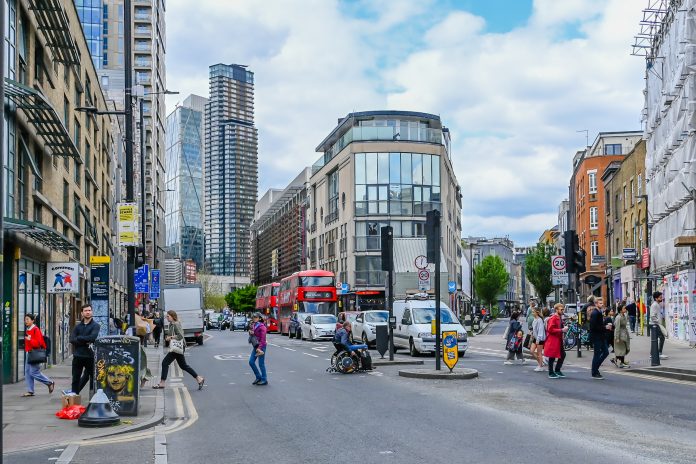The British high street is rapidly declining, and London is no exception, as the capital’s most iconic shopping street has fallen to discount stores and American candy stores in recent years – what can be done to help?
In an attempt to revive Oxford Street with unique retail offerings, the Westminster Council’s newest scheme will give selected brands six months’ rent for free. The initiative is already underway, with the first stores set to open in Autumn 2023.
Oxford Street offers a unique set of circumstances for high street revival as a world-renowned retail location.
However, as the proposed scheme focuses on installing more of the same type of stores that led to its decline, it does little to reverse current archaic attitudes towards the high street.
The British high street is rapidly declining
The way people shop has changed forever, with the pandemic acting as a catalyst for online retail to dominate and high street footfall to dwindle.
In recent years, major retail brands, including Wilko, Debenhams and Arcadia Group, have gone into administration, leaving empty units in towns and cities across the country. Instead of continuing efforts to revive the high street of the past, it’s time to reevaluate what they mean to modern society and consider that communities need more than just retail to thrive.
At a time when regeneration and levelling up are driving the conversation, it’s misplaced to invest millions of pounds into the British high street without considering its potential to support the wider growth of market towns around the country.
In a recent report published by national law firm Shakespeare Martineau and planning and design consultancy Marrons, the British high street has been reimagined to consider a new type of hub that reflects all needs, moving away from the one-dimensional retail approach that doesn’t parallel modern life.
The UK high street should be a mirror of society
The British high street should be a mirror of society as it changes. For example, as 31% of the total UK population will be in retirement in 2041, the modern high street should include later living and potentially social care.
This approach has seen some success across the UK already in Peterborough, St Albans, Darlington and Cheltenham, for example.
In Cheltenham, Life Story, a provider of high-quality retirement homes, has built a complex in the heart of the spa town, providing easy access to the high street, which enables elderly individuals access to shops and restaurants, in addition to freeing up larger homes for young families, increasing socialisation and providing better access to healthcare facilities.
The inclusion of later living accommodations in the high street reveals the benefits that can come from considering and designing the high street around all aspects and demographics within a community.
Rethinking the role of healthcare
As well as later living, rethinking the role of healthcare in the community presents an opportunity to create hubs in the high street.
The pandemic saw the creation of pop-up vaccination centres, which represented a change in the usual route of care to alleviate pressure on GPs and hospitals; the potential for a community-led healthcare system was demonstrated.
This idea could be further built and expanded on, for example, by empowering pharmacists and specialised practices to relocate the minor functions of the NHS and social care onto high streets.
In order to achieve the ideal high street that embraces new ways of life and supports local communities, especially for healthcare, it’s essential to forge both public and private partnerships and, importantly, ensure that all key stakeholders are involved in the planning process right from the start.
What we need to do to support a community-centric high street
To support a community-centric high street, local governments and organisations should be refocusing on master planning, a comprehensive planning strategy that prioritises community development.
Whilst previously, governments have failed at executing master planning successfully, but by thinking long-term to understand the needs of a community and reflecting this in the organisation of an area, organisations can integrate all elements of society to guide growth and development.
While the Oxford Street scheme demonstrates the appetite to invest in retail spaces, it also shows that local governments are failing to think outside the retail ‘box’.
Using master planning and other techniques to make a more inclusive high street would benefit towns economically, socially and culturally.
Long-term master planning enhances the potential for success by joining the forces of the public and private sector, providing direction for the reinvention of the high street beyond simply retail.
For more information about the reinvention of the high street, download the More than Stores report here.
This piece was written and provided by Joseph Soul, commercial development partner at law firm, Shakespeare Martineau











